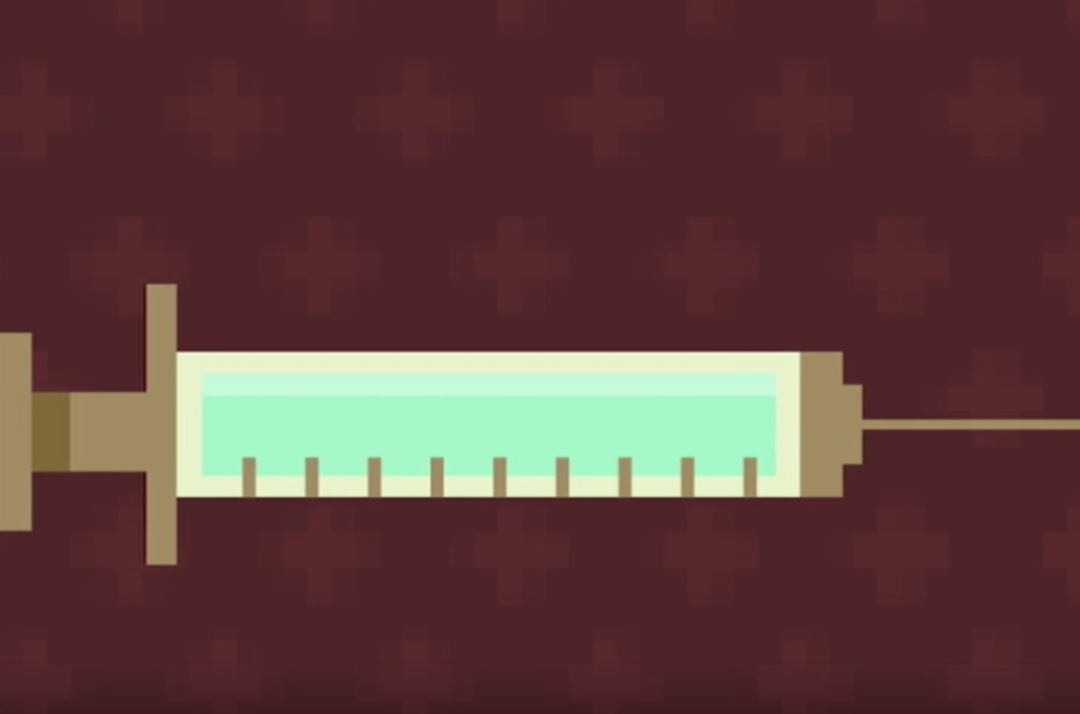
演讲题目:Why do you need to get a flu shot every year?
演讲简介:
每年,全世界各地的医院都会采集流感患者的样本,并把它们送到顶级病毒学专家手中,为的是设计下一个流感季的疫苗。但是为什么我们每年都需要新的疫苗?
中英文字幕
All year long,
每年,
researchers at hundreds of hospitals around the world collect samples from flu patients and send them to top virology experts with one goal:
全球数百家医院的研究人员们都会从流感患者身上采集样本交给顶级病毒学专家,目的是为下一个:
to design the vaccine for the next flu season.
为下一个流感发病季研发疫苗。
But why do we need a new one every year?
但为什么我们每年都需要新的疫苗?
Vaccines for diseases like mumps and rubella offer a lifetime of protection with two shots early in life.
针对腮腺炎和风疹的疫苗可以提供终身保护,只要在儿童时期接种两次即可。
What's so special about the flu?
流感有什么特殊之处吗?
Two factors make the flu a tough target.
预防流感之所以困难有如下两个原因。
First, there are more than 100 subtypes of the influenza virus, and the ones in circulation change from season to season.
原因一,流感病毒有一百多种亚型,每个季节盛行的流感病毒都有所不同。
And second, the flu's genetic code allows it to mutate more quickly than many other viruses.
原因二在于,流感病毒的基因序列使得它的变异速度比其它病毒更快。
The flu spreads by turning a host's own cells into viral production factories.
流感病毒把宿主细胞变成病毒生产工厂,从而实现传播。
When the virus is engulfed by a host cell, it expels its genetic material, which makes its way to the nucleus.
当病毒被宿主细胞吞噬后,会释放遗传物质,这些遗传物质会进入细胞核。
There, cellular machinery that normally copies the host's genes starts replicating viral genes instead, creating more and more copies of the virus.
细胞核中本应进行宿主基因的复制,现在则转而复制病毒基因,从而制造出更多的病毒。
New viruses are repackaged and crammed into the cell until it bursts, sending freshly minted influenza viruses out to infect additional cells.
新的病毒将重新组装充满整个细胞,直至细胞迸裂,新产生的流感病毒得以扩散,继续感染新的细胞。
Most viruses follow this script.
大部分病毒会遵循这个过程,
The trick with the flu is that its genetic material isn't DNA but a similar compound called RNA.
但流感病毒的特别之处在于,其遗传物质并非DNA(脱氧核糖核酸),而是一种与之类似的化合物,称为RNA(核糖核酸)。
And RNA viruses can mutate much faster.
RNA病毒的变异速度要快得多。
When cells synthesize DNA, a built-in proofreader recognizes and corrects mistakes, but the RNA synthesis mechanism doesn't have this fail-safe.
当细胞合成DNA时,细胞本身具有校对机制,可以辨认和修正错误,但RNA的合成过程并不具有这种机制。
If errors creep in, they stick around creating new variants of the virus.
如果出现错配,就会制造出新的变异病毒。
Why is this a problem?
为什么这是个麻烦呢?
Because vaccines depend on recognition.
这是因为,疫苗需要辨认病毒特点。
The flu vaccine includes some of the same substances, called antigens, found on the surface of the virus itself.
流感疫苗含有一些与病毒相同的物质,我们称之为抗原,抗原存在于病毒表面。
The body identifies those fragments as foreign and responds by producing compounds called antibodies, tailor-made to match the antigens.
身体把抗原视为外来物质,为了应对威胁,身体会释放出一种化合物,我们称之为抗体,抗体与抗原相互匹配。
When a vaccinated person encounters the actual virus,
当一个已接受过疫苗接种的人被真正的病毒感染时,
the preprogrammed antibodies help the immune system identify the threat and mobilize quickly to prevent an infection.
之前已经激活的抗体会帮助免疫系统识别该种威胁,并迅速出击,避免感染发生。
Those antigens are different for every strain of influenza.
不同流感病毒具有不同的抗原。
If vaccination has prepared the immune system for one strain, a different one may still be able to sneak by.
如果疫苗是为单一毒株而设,那么其他病毒依然可以引起感染。
Even within the same strain of flu, those rapid genetic mutations can change the surface compounds enough that the antibodies may not recognize them.
就算流感病毒相同,迅速的基因突变也足以改变病毒表面的化合物,以致抗体无法辨认它们。
To make things even morecomplicated, sometimes two different strains combine to create an entirely new hybrid virus.
让事情更复杂的是,有时,两种不同病毒会结合形成新的混种病毒。
All of this makes vaccinating for the flu like trying to hit a moving transforming target.
这使得流感疫苗的研发像是射击一个不断移动和变化的靶子。
That's why scientists are constantly collecting data about which strains are circulating and checking to see how much those strains have mutated from previous years' versions.
这也就是为什么科学家夜以继日地工作,收集当下流行病毒的数据,并将这些病毒与往年相比,观察其变异情况。
Twice annually, the World Health Organization pulls together experts to analyze all that data, holding one meeting for each hemisphere.
每年,世界卫生组织都会召集专家分析这些数据,南北半球各举行一次会议。
The scientists determine which strains to include in that season's vaccine, picking four for the quadrivalent vaccine in use today.
科学家将确定用于制作当季疫苗的病毒,选出四种,作为现今所用的四价疫苗。
In spite of the flu's evasive maneuvers, in recent years, the group's predictions have been almost always correct.
尽管流感病毒捉摸不定,但近些年来,专家团体的预测几乎都准确无误。
Even when flu strains mutate further,
就算流感病毒进一步突变,
the vaccine is often close enough that a vaccinated person who catches the flu anyway will have a milder and shorter illness than they would otherwise.
制作的疫苗仍然奏效,相比没有进行疫苗接种的人,打过疫苗的人即使感染流感,病情也更轻微和短暂。
Vaccination also helps protect other people in the community who may not be medically eligible for the shot by preventing those around them from carrying the virus.
疫苗接种也会保护社区内的其他人,这些人可能不具备接种疫苗的医学条件,若周边的人接种了疫苗,他们自己也就不会成为病毒携带者。
This is called herd immunity.
这被称为“群体免疫”。
The flu shot can't give you the flu.
流感疫苗并不会让你感染流感,
It contains an inactivated virus that isn't capable of making you sick.
疫苗包含的是无法引起病症的灭活病毒。
You might feel tired and achy after getting it, but that's not an infection.
打完疫苗后,你也许会感觉疲惫或疼痛,但那并不是病毒感染,
It's your normal immune response to the vaccine.
而是身体对疫苗的正常免疫反应。
Some parts of the world use, instead of a shot, an inhaled vaccine that contains a weakened live virus.
一些国家使用的不是疫苗针,而是疫苗吸入器,其中含有活性较低的活体病毒。
This is also safe for the vast majority of people.
对大多数人来说,这也是很安全的。
Only those with impaired immune systems would be at risk, but they're typically not given live vaccines.
可能会面临风险的只有那些免疫系统存在缺陷的人,但通常也不会让这些人使用活性疫苗。
Meanwhile, scientists are working to develop a universal flu vaccine that would protect against any strain, even mutated ones.
与此同时,科学家正努力研发一种通用性流感疫苗,可预防任何类型的病毒,甚至包括变异病毒。
But until then, the hunt for next year's vaccine is on.
但在那之前,研发下一年疫苗的工作仍在继续。
|
|
 /1
/1 